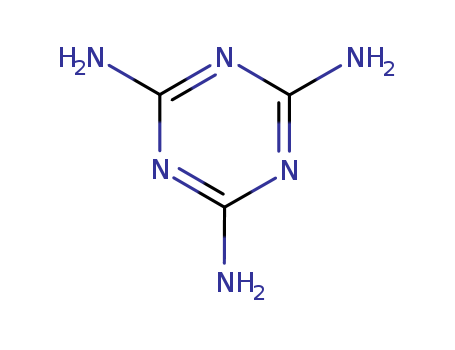- Chemical Name:Melamine
- CAS No.:108-78-1
- Deprecated CAS:130392-03-9,169314-62-9,504-18-7,65544-34-5,67757-43-1,68379-55-5,70371-19-6,94977-27-2,1228929-27-8,1399841-69-0,1399841-71-4,1399841-73-6,1228929-27-8,169314-62-9,504-18-7,65544-34-5,67757-43-1,68379-55-5,94977-27-2
- Molecular Formula:C3H6N6
- Molecular Weight:126.121
- Hs Code.:2933.61 Oral, rat LD50: 3161 mg/kg
- European Community (EC) Number:203-615-4
- ICSC Number:1154
- NSC Number:8152,2130
- UNII:N3GP2YSD88
- DSSTox Substance ID:DTXSID6020802
- Nikkaji Number:J2.428G
- Wikipedia:Melamine
- Wikidata:Q212553
- Metabolomics Workbench ID:49629
- ChEMBL ID:CHEMBL1231106
- Mol file:108-78-1.mol
Synonyms:1,3,5-triazine-2,4,6-triamine;2,4,6-triamino-s-triazine;melamine;melamine bis(oxymethyl)phosphonic acid salt;melamine oxalate (1:1);melamine phosphate;melamine sulfate (1:1);melamine sulfate (1:2);melamine sulfate (2:1), dihydrate;melamine sulfate (4:1), tetrahydrate;melamine sulfite (1:1);melamine sulfite (2:1), dihydrate;melamine sulfite (2:1), tetrahydrate;melaminium acetate acetic acid solvate;melaminium citrate



 Xi,
Xi, Xn
Xn


